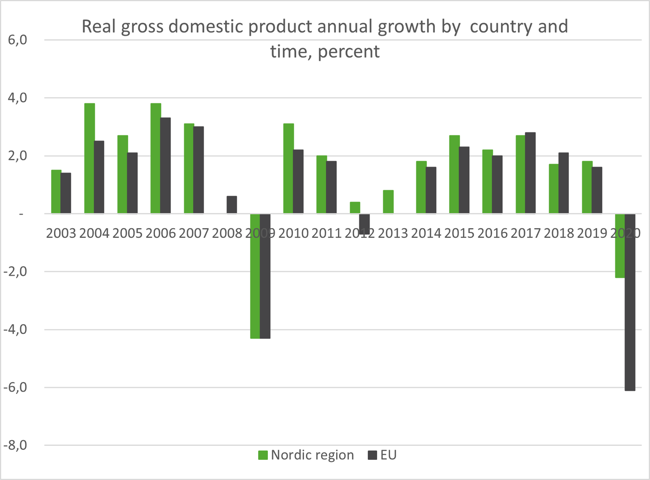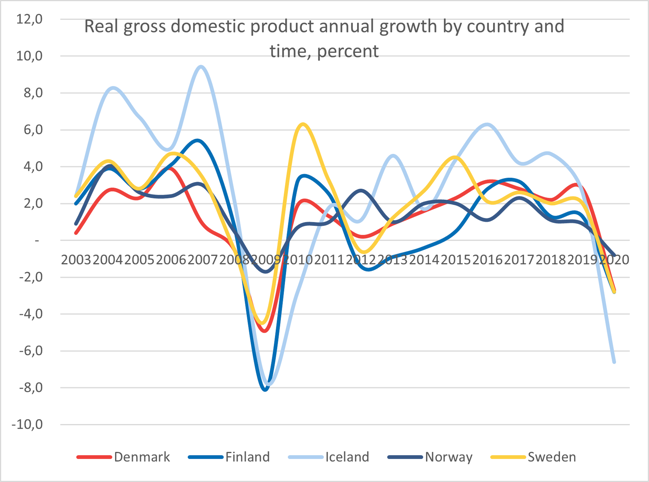GDP growth in the Nordic countries during the pandemic
The macroeconomic development in the Nordic countries is one of many things that have been affected by the ongoing pandemic. Like so many others, the Nordic countries have experienced a decline in gross domestic product (GDP) growth. However, when compared with other EU countries, the Nordic countries have done relatively well.
Overall, the Nordic region’s [1] economies have performed better than Europe [2] as a whole with a decline in GDP of 2.2 percent in 2020. The decline in GDP in the EU was 6.1 percent.

Iceland was the Nordic country that stood out in 2020 with a decline in GDP of 6.6 percent. Given how important the tourism industry is to the country and the effects that the pandemic has had on that particular sector, this is not surprising. Norway, on the other hand, reported the lowest decline in GDP growth with 0.8 per cent. For the other three countries, the development during the year was similar, a decrease of 2.7 per cent in Denmark and 2.8 per cent in Finland and Sweden.

The Faroe Islands are excluded from the analysis as they do not calculate real GDP growth. Åland and Greenland do, but the figures for 2020 are not yet published.
[1] Figures from Denmark, Greenland, Finland, Åland, Iceland, Norway and Sweden are included in the Nordic aggregate. Due to missing data in 2019 and 2020 for Åland and in 2020 for Greenland, values for these two regions have been imputed (last observation carried forward).
[2] EU refers to EU27_2020, which is the European Union with a fixed area composition of the current 27 countries.
Source: Nordic Statistics Database, NAAC02.